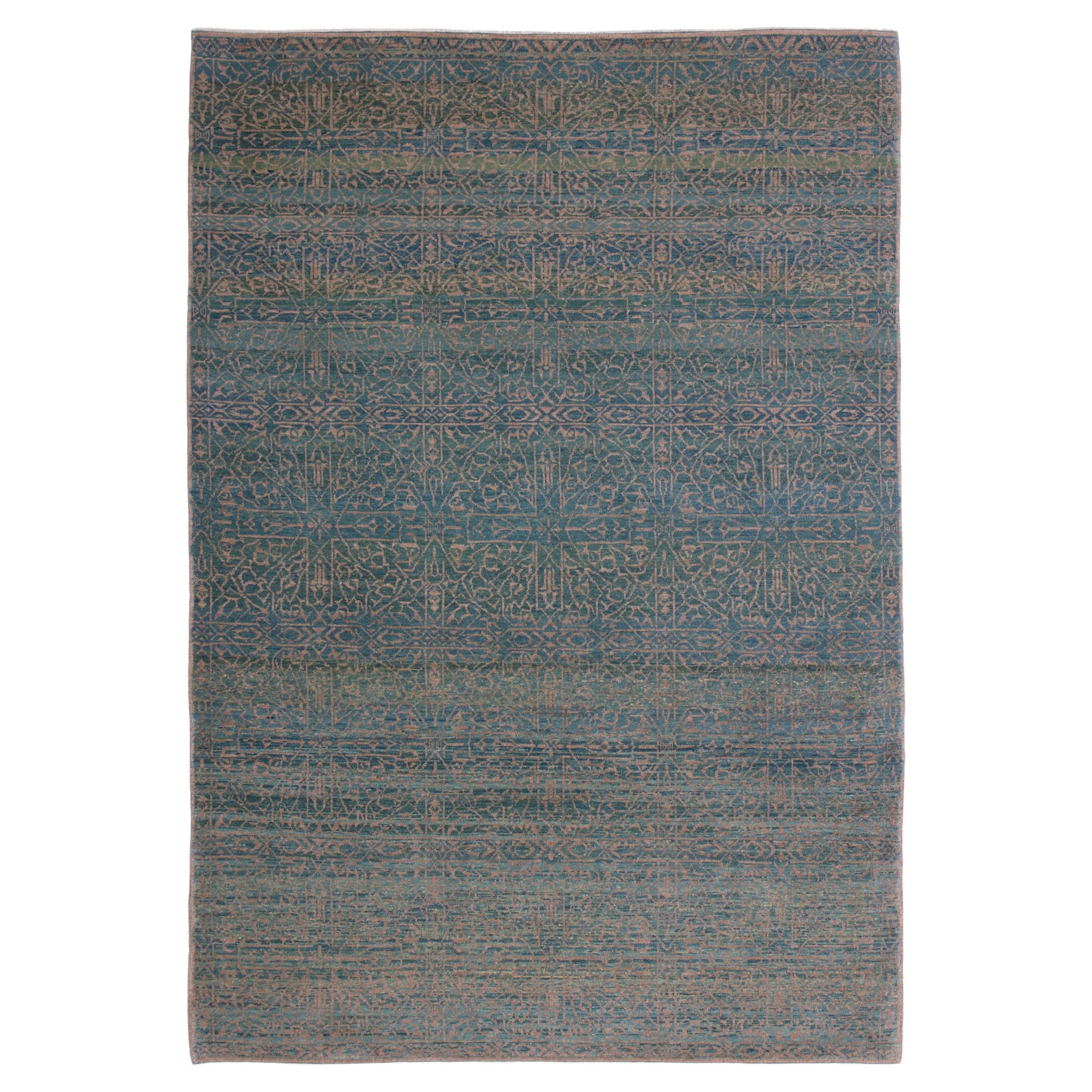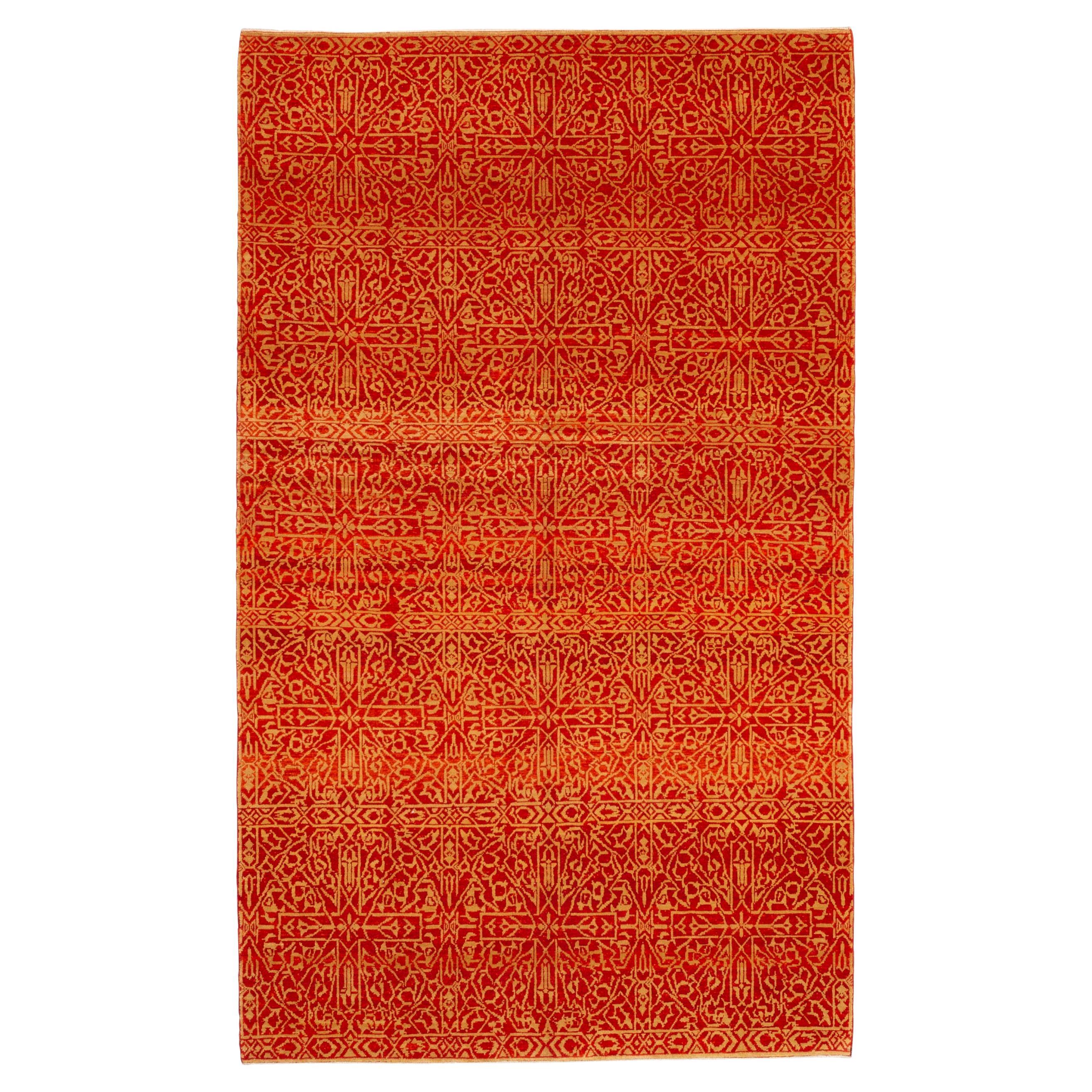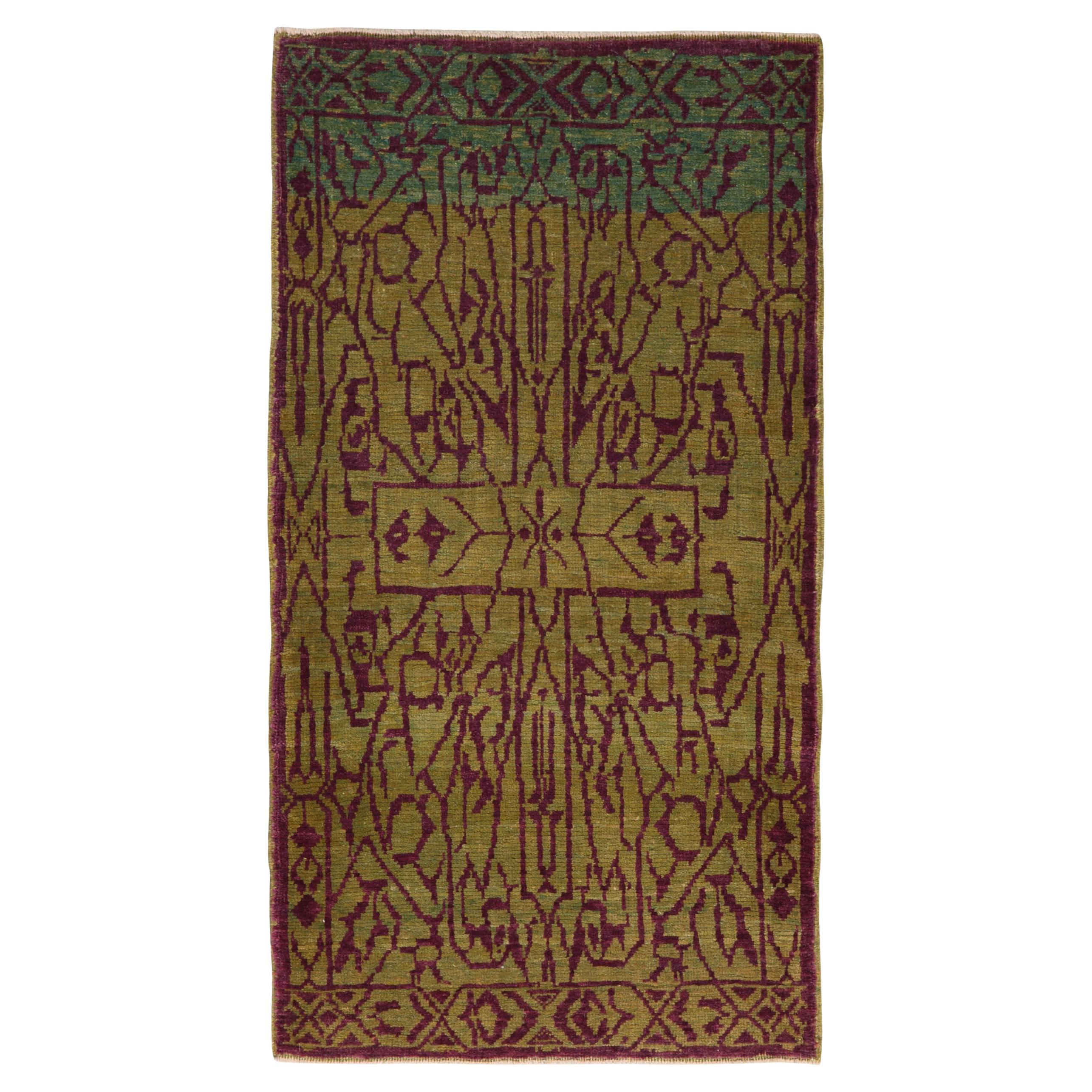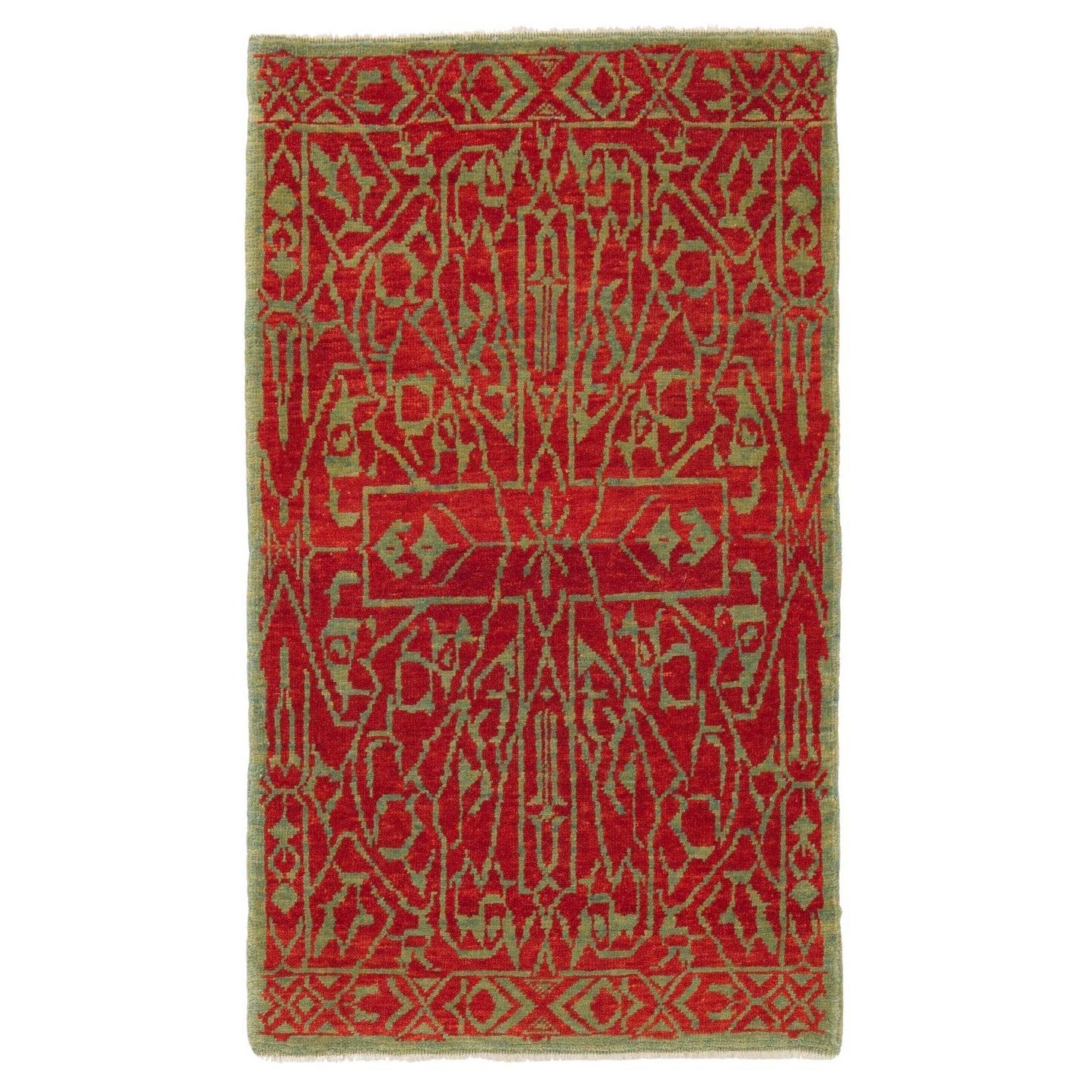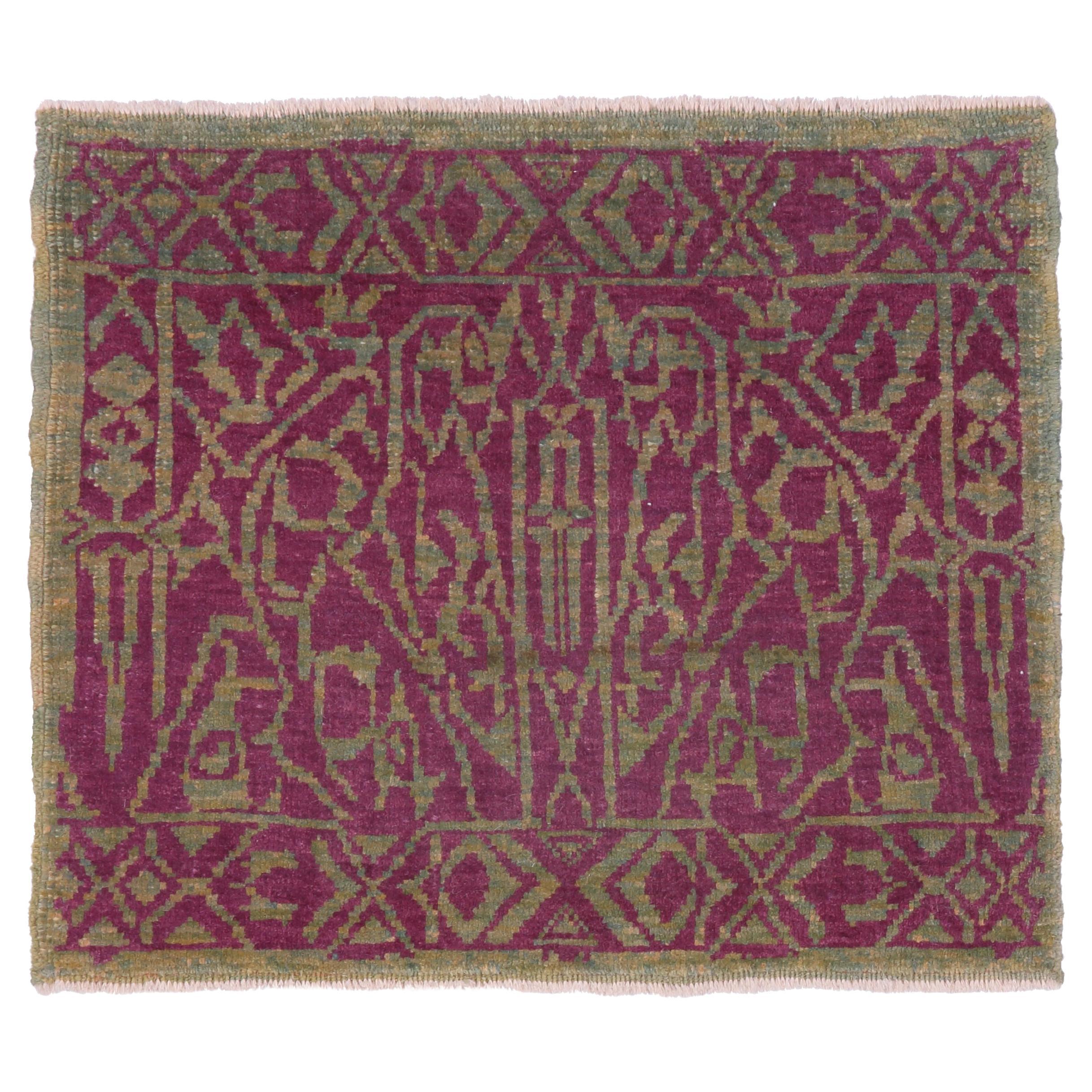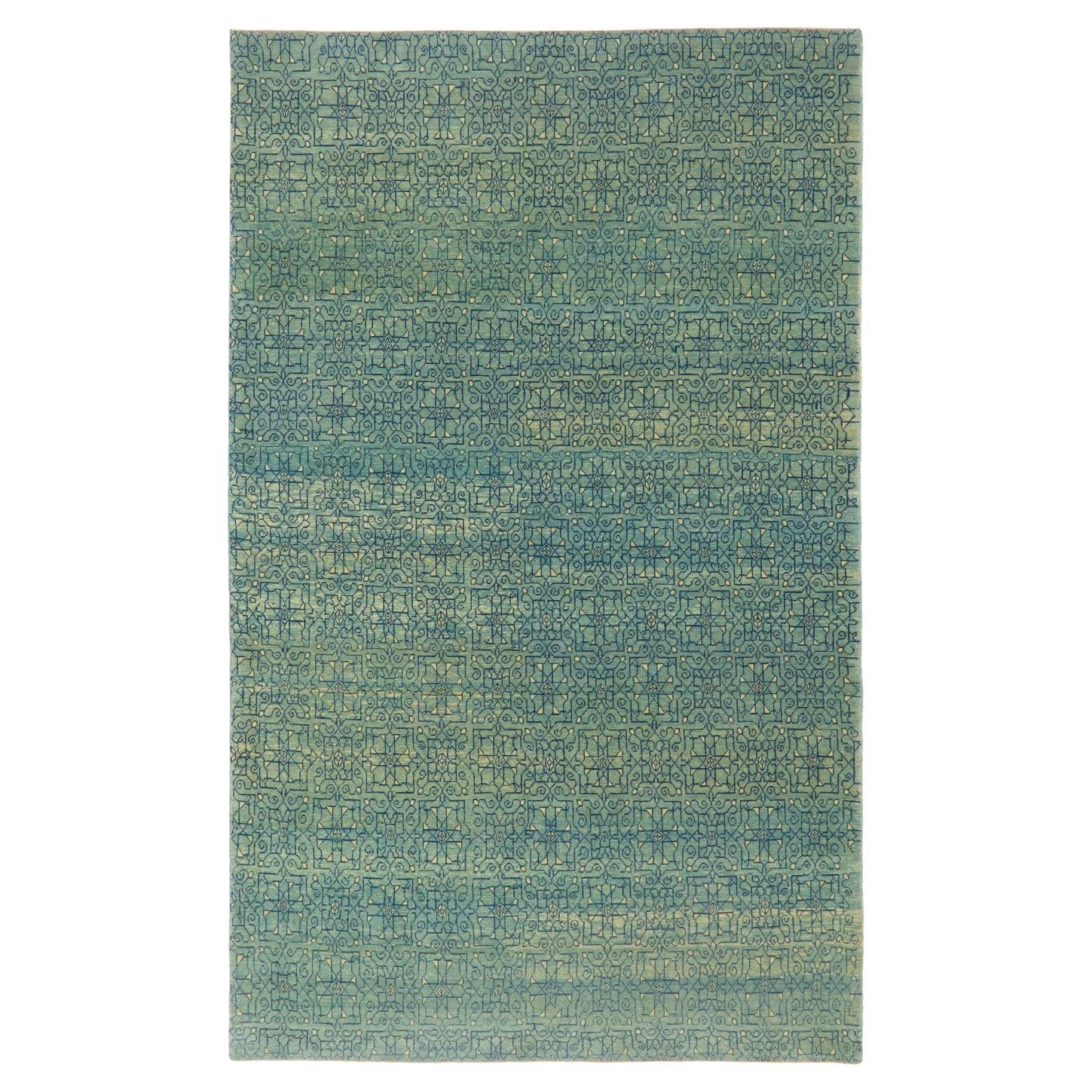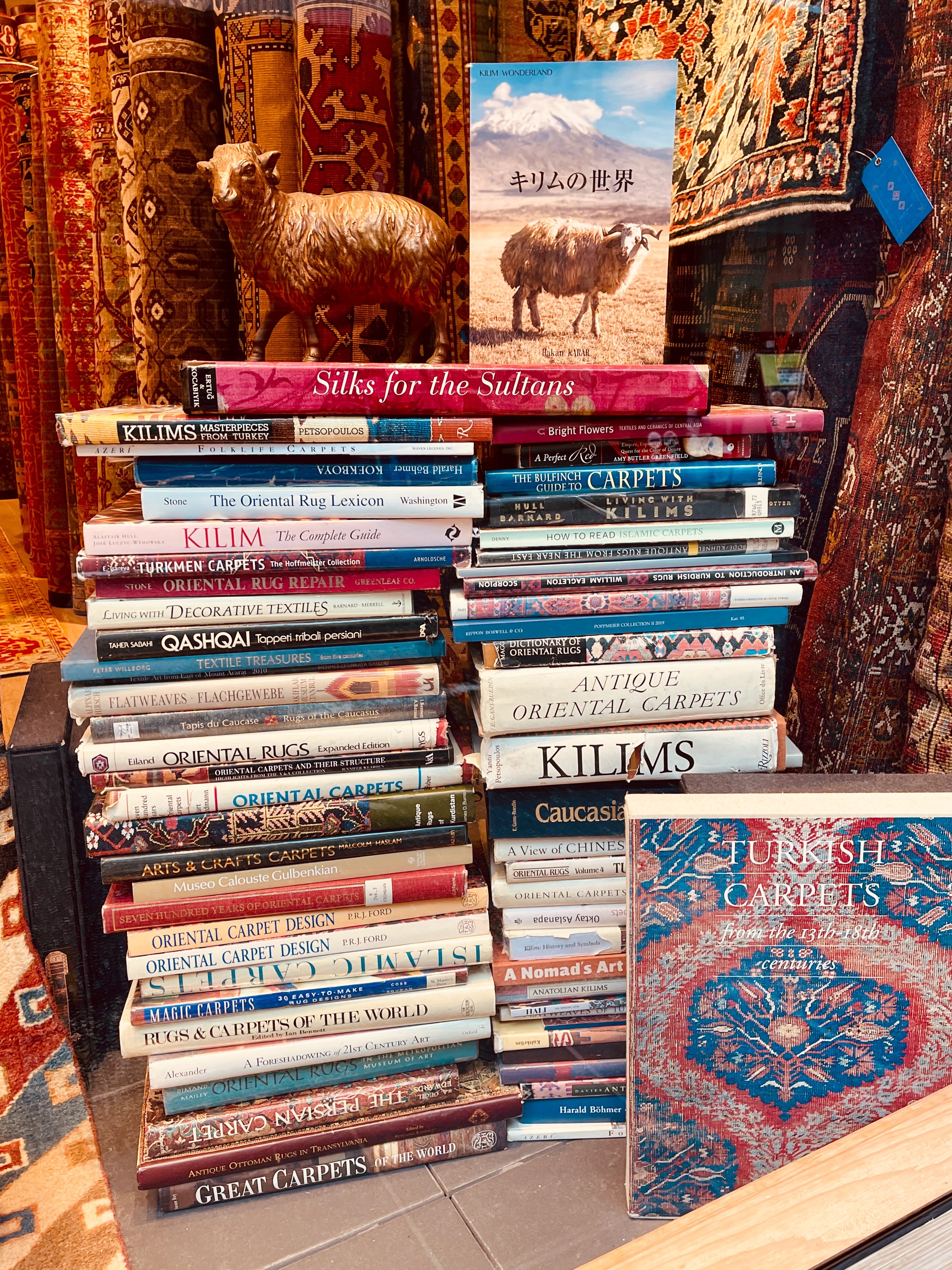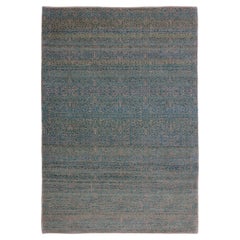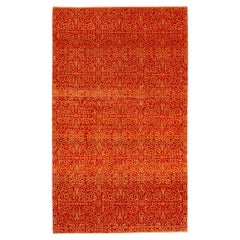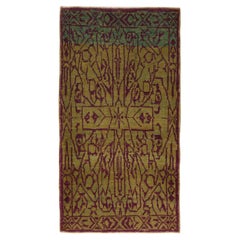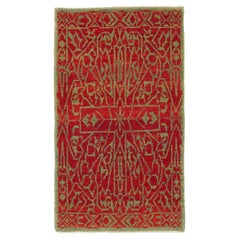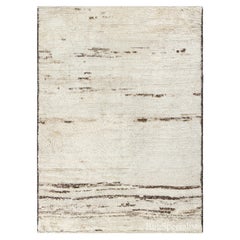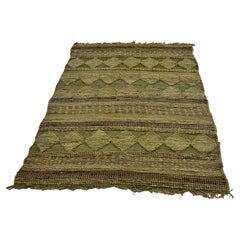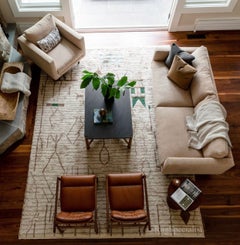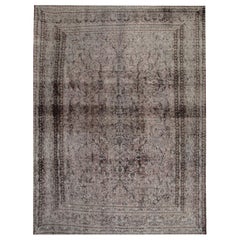Items Similar to Ararat Rugs Modern Rug with Mamluk Geometric Design, Natural Dyed Carpet
Want more images or videos?
Request additional images or videos from the seller
1 of 10
Ararat Rugs Modern Rug with Mamluk Geometric Design, Natural Dyed Carpet
About the Item
This rug has an interpreted design composed of a geometric lattice pattern taken from a part of the Mamluk rug, filling the field elegantly, has the impression that it is only part of a larger scheme designed 15th-century rug from the Mamluk era, Cairo region, Eygpt. Mamluk carpets originated in a physical environment that lacked the combination of abundant marginal grazing land and a temperate climate with cool winters that were common to most carpet-weaving areas in the Islamic world. While related to a broader tradition of Turkish weaving centered in Anatolia, far to the north, the designs of these carpets include atypical elements, such as stylized papyrus plants, that are deeply rooted in Egyptian tradition. Their unusual composition and layout probably represent an attempt to develop a distinctive product that could in effect establish a “Mamluk brand” in the lucrative European export market. The uncharacteristic color scheme—devoid of the undyed white pile and employing a limited range of three or five hues in much the same value—also suggests a conscious attempt to create a particular stylistic identity. Also virtually unique in the world of Islamic carpets is the S-spun wool. It has been argued that the tradition of clockwise wool spinning originated in Egypt because of the earlier Egyptian tradition of spinning flax into linen thread. Details of the plant’s botanical structure make it impossible to spin flax fiber in the more common counterclockwise direction utilized throughout the Middle East for wool and cotton. Mamluk carpets with the color combinations seen in the Simonetti are now generally accepted as part of an earlier tradition that has many links to the weaving of Anatolia, Iran, and Syria. The “three-color” Mamluk carpets, well represented in the Metropolitan’s collection, represent a later development that continued well after the Ottoman conquest of Egypt in 1517. Many such carpets may have been produced well into the seventeenth century, and possibly even later. (Walter B. Denny in [Ekhtiar, Soucek, Canby, and Haidar 2011]). The design of the rug is interpreted by our designers from our Mamlouk-type rugs collection and soft colors are used for this rug.
Color summary: 2 colors in total;
Feldgrau 414 (Chamomile - Indigo)
Bamboo Beige 99 (Only Specially Washed)
Group: Islamic Rugs Family
Area: Mamluk
Material of Pile: Natural Dyed Hand-spun Wool
Material Warp / Weft: Wool on Wool
Structure: Symmetrical knot on depressed warp inclining to the right
Knots Density: 39x39
Production Place: Adiyaman
Weight: 9.70kg
Location: Istanbul
Dimensions:
4 ft 9 in x 6 ft 4 in ( 145cm x 194cm )
- Creator:Ararat Rugs (Manufacturer)
- Dimensions:Width: 57.09 in (145 cm)Length: 76.38 in (194 cm)
- Style:Revival (In the Style Of)
- Materials and Techniques:
- Place of Origin:
- Period:
- Date of Manufacture:2022
- Production Type:New & Custom(One of a Kind)
- Estimated Production Time:Available Now
- Condition:
- Seller Location:Tokyo, JP
- Reference Number:1stDibs: LU8206241841962
ARARAT RUGS
We know and believe that the geography we come from, our past, and our lifestyle are the most important bond between us to carry the oriental carpet art and culture to the next generations along with our core values in our ongoing growth journey.
We are aware that the way to achieve this goal and carry this priceless art and culture to the future depends on a lot of work with all our people every day while adhering to our core values.
For us, art is meaningful in the sense that it brings together various cultures around the world. It is an honor for us that oriental carpet art and culture have been instrumental in this for centuries and that we are a part of this business.
We are tirelessly keeping an eye on auction house information around the world about carpets. New York's Metropolitan, London's Victoria & Albert Museums, and other famous art museums, as well as small specialized museums that house private collections, and books about oriental carpets to collect information on outstanding carpet designs and patterns from around the world. It's our Self-improving and Self-developing culture.
As Turkish Culture of Hospitality, the Kurdish Culture of Generosity, and as Japanese Culture of Business Punctuality; are the most important values that this multicultural background has taught and bequeathed to us. It is essential and valuable for us that you feel this feeling not only by looking at our oriental carpets but from the moment you contact us.
About the Seller
5.0
Platinum Seller
Premium sellers with a 4.7+ rating and 24-hour response times
Established in 1970
1stDibs seller since 2023
42 sales on 1stDibs
Typical response time: 2 hours
- ShippingRetrieving quote...Shipping from: Tokyo, Japan
- Return Policy
Authenticity Guarantee
In the unlikely event there’s an issue with an item’s authenticity, contact us within 1 year for a full refund. DetailsMoney-Back Guarantee
If your item is not as described, is damaged in transit, or does not arrive, contact us within 7 days for a full refund. Details24-Hour Cancellation
You have a 24-hour grace period in which to reconsider your purchase, with no questions asked.Vetted Professional Sellers
Our world-class sellers must adhere to strict standards for service and quality, maintaining the integrity of our listings.Price-Match Guarantee
If you find that a seller listed the same item for a lower price elsewhere, we’ll match it.Trusted Global Delivery
Our best-in-class carrier network provides specialized shipping options worldwide, including custom delivery.More From This Seller
View AllArarat Rugs Modern Rug with Mamluk Geometric Design, Natural Dyed Carpet
By Ararat Rugs
Located in Tokyo, JP
This rug has an interpreted design composed of a geometric lattice pattern taken from a part of the Mamluk rug, filling the field elegantly, has the impression that it is only part of a larger scheme designed 15th-century rug from the Mamluk era, Cairo region, Eygpt. Mamluk carpets originated in a physical environment that lacked the combination of abundant marginal grazing land and a temperate climate with cool winters that were common to most carpet-weaving areas in the Islamic world. While related to a broader tradition of Turkish weaving centered in Anatolia, far to the north, the designs of these carpets include atypical elements, such as stylized papyrus plants, that are deeply rooted in Egyptian tradition. Their unusual composition and layout probably represent an attempt to develop a distinctive product that could in effect establish a “Mamluk brand” in the lucrative European export market. The uncharacteristic color scheme—devoid of the undyed white pile and employing a limited range of three or five hues in much the same value—also suggests a conscious attempt to create a particular stylistic identity. Also virtually unique in the world of Islamic carpets is the S-spun wool. It has been argued that the tradition of clockwise wool spinning originated in Egypt because of the earlier Egyptian tradition of spinning flax into linen thread. Details of the plant’s botanical structure make it impossible to spin flax fiber in the more common counterclockwise direction utilized throughout the Middle East for wool and cotton.
Mamluk carpets with the color combinations seen in the Simonetti are now generally accepted as part of an earlier tradition that has many links to the weaving of Anatolia, Iran, and Syria. The “three-color” Mamluk carpets, well represented in the Metropolitan’s collection, represent a later development that continued well after the Ottoman conquest of Egypt in 1517. Many such carpets may have been produced well into the seventeenth century, and possibly even later. (Walter B. Denny in [Ekhtiar, Soucek, Canby, and Haidar 2011]). The design of the rug is interpreted by our designers from our Mamlouk-type rugs collection and soft colors are used for this rug.
Color summary: 2 colors of total
Bamboo Beige 99 (only specially washed)
Feldgrau 414 (Chamomile – indigo)
Group: Islamic Rugs...
Category
21st Century and Contemporary Turkish Revival Turkish Rugs
Materials
Wool, Organic Material, Natural Fiber
Ararat Rugs Modern Rug with Mamluk Geometric Design, Natural Dyed Carpet
By Ararat Rugs
Located in Tokyo, JP
This rug has an interpreted design composed of a geometric lattice pattern taken from a part of the Mamluk rug, filling the field elegantly, has the impression that it is only part of a larger scheme designed 15th-century rug from the Mamluk era, Cairo region, Eygpt. Mamluk carpets originated in a physical environment that lacked the combination of abundant marginal grazing land and a temperate climate with cool winters that were common to most carpet-weaving areas in the Islamic world. While related to a broader tradition of Turkish weaving centered in Anatolia, far to the north, the designs of these carpets include atypical elements, such as stylized papyrus plants, that are deeply rooted in Egyptian tradition. Their unusual composition and layout probably represent an attempt to develop a distinctive product that could in effect establish a “Mamluk brand” in the lucrative European export market. The uncharacteristic color scheme—devoid of the undyed white pile and employing a limited range of three or five hues in much the same value—also suggests a conscious attempt to create a particular stylistic identity. Also virtually unique in the world of Islamic carpets is the S-spun wool. It has been argued that the tradition of clockwise wool spinning originated in Egypt because of the earlier Egyptian tradition of spinning flax into linen thread. Details of the plant’s botanical structure make it impossible to spin flax fiber in the more common counterclockwise direction utilized throughout the Middle East for wool and cotton.
Mamluk carpets with the color combinations seen in the Simonetti are now generally accepted as part of an earlier tradition that has many links to the weaving of Anatolia, Iran, and Syria. The “three-color” Mamluk carpets, well represented in the Metropolitan’s collection, represent a later development that continued well after the Ottoman conquest of Egypt in 1517. Many such carpets may have been produced well into the seventeenth century, and possibly even later. (Walter B. Denny in [Ekhtiar, Soucek, Canby, and Haidar 2011]). The design of the rug is interpreted by our designers from our Mamlouk-type rugs collection and vivid colors are used for this rug.
Color summary: 2 colors in total;
Imperial Red 426 (Madder Root)
Sunray Color 405 (Henna)
Group: Islamic Rugs...
Category
21st Century and Contemporary Turkish Revival Turkish Rugs
Materials
Wool, Organic Material, Natural Fiber
Ararat Rugs Mamluk Wagireh Rug with Geometric Design Revival Carpet Natural Dyed
By Ararat Rugs
Located in Tokyo, JP
This geometric lattice pattern rug has the impression that it is only part of a larger scheme designed 15th-century rug from the Mamluk era, Cairo region, Eygpt. These designs have o...
Category
21st Century and Contemporary Turkish Revival Turkish Rugs
Materials
Wool, Organic Material, Natural Fiber
Ararat Rugs Mamluk Wagireh Rug with Geometric Design Revival Carpet Natural Dyed
By Ararat Rugs
Located in Tokyo, JP
This geometric lattice pattern design rug has the impression that it is only part of a larger scheme-designed 15th-century rug from the Mamluk era, Cairo region, Eygpt. These designs...
Category
21st Century and Contemporary Turkish Revival Turkish Rugs
Materials
Wool, Organic Material, Natural Fiber
Ararat Rugs Mamluk Wagireh Rug with Geometric Design Revival Carpet Natural Dyed
By Ararat Rugs
Located in Tokyo, JP
This geometric lattice pattern rug has the impression that it is only part of a larger scheme-designed 15th-century rug from the Mamluk era, Cairo region, Eygpt. These designs have o...
Category
21st Century and Contemporary Turkish Revival Turkish Rugs
Materials
Wool, Organic Material, Natural Fiber
Ararat Rugs Modern Rug with Mamluk Jerrehian Border Design, Natural Dyed Carpet
By Ararat Rugs
Located in Tokyo, JP
The source of the rug comes from the possession of Endre Unger, which was sold at Sotheby’s in 1992. That rug with the central star was designed in the early 16th-century rug by Maml...
Category
21st Century and Contemporary Turkish Revival Turkish Rugs
Materials
Wool, Organic Material, Natural Fiber
You May Also Like
Handmade Turkish Tulu Rug, 100% Natural Un-Dyed Wool, Modern Scandinavian Carpet
Located in Spring Valley, NY
100% Natural Hand-Spun Wool of finest quality.
These hand-knotted rugs are produced from scratch in our atelier located in Central Anatolia, famous for being one of the world's olde...
Category
2010s Turkish Tulu Turkish Rugs
Materials
Wool
$853 Sale Price
30% Off
Free Shipping
Geometric Abstract Design Carpet / Rug, 1950s
Located in Praha, CZ
- 1950s
- Czechoslovakia
- good original condition
- cleaned
Category
Vintage 1950s Czech Mid-Century Modern Turkish Rugs
Materials
Grasscloth
Modern Moroccan Rug. 100% Natural Un-Dyed Wool. Custom Hand Knotted Tulu Carpet
Located in Spring Valley, NY
100% Natural Hand-Spun Wool of finest quality.
These hand-knotted rugs are produced from scratch in our atelier located in Central Anatolia, famous for being one of the world's olde...
Category
21st Century and Contemporary Moroccan Modern Moroccan and North African...
Materials
Wool
$1,679 Sale Price / item
40% Off
Free Shipping
Vintage Over-Dyed Grey Rug Carpet Oriental Wool Area Rug
Located in Wembley, GB
This distressed over-dyed rug is one of the best choices as Home decor objects. This grey rug has been distressed and over-dyed to achieve a contemporary, worn piece. This unique pie...
Category
Vintage 1950s Pakistani Revival Turkish Rugs
Materials
Wool, Cotton, Organic Material
6.5x10.8 Ft Blue Color Over-Dyed Rug. Handmade Turkish Carpet with Floral Design
Located in Spring Valley, NY
Our over-dyed rugs are all hand-knotted vintage pieces that are recreated in our workshop to cater to a wider range of interior design choices from modern to coastal, from industrial...
Category
Vintage 1960s Turkish Modern Turkish Rugs
Materials
Wool, Cotton
$1,006 Sale Price
30% Off
Free Shipping
Handmade Turkish Vintage Rug Over-Dyed in Pink, Elegant Design Carpet
Located in Spring Valley, NY
Our over-dyed rugs are all hand-knotted vintage pieces that are recreated in our workshop to cater to a wider range of interior design choices from modern to coastal, from industrial...
Category
20th Century Turkish Modern Turkish Rugs
Materials
Wool, Cotton
$978 Sale Price
40% Off
Recently Viewed
View AllMore Ways To Browse
Vintage Leopard Print Chair
Vintage Round Formica Table
Vintage Round Walnut Coffee Table
Vintage Steelcase Office Furniture
Vintage Swing Seats
Vintage Tufted Settee
Vintage Webbed Chairs
Vito Nesta Hand
Wabi Wood Desk
Walnut 2 Tier Table
Walnut Cube Side Table
Walnut Parsons Table
Waterfall Couch
Waterfall Desks
Weather Resistant Coffee Table
Westnofa Leather Lounge Chair
White Cube Coffee Table
Wicker Easy Chair
